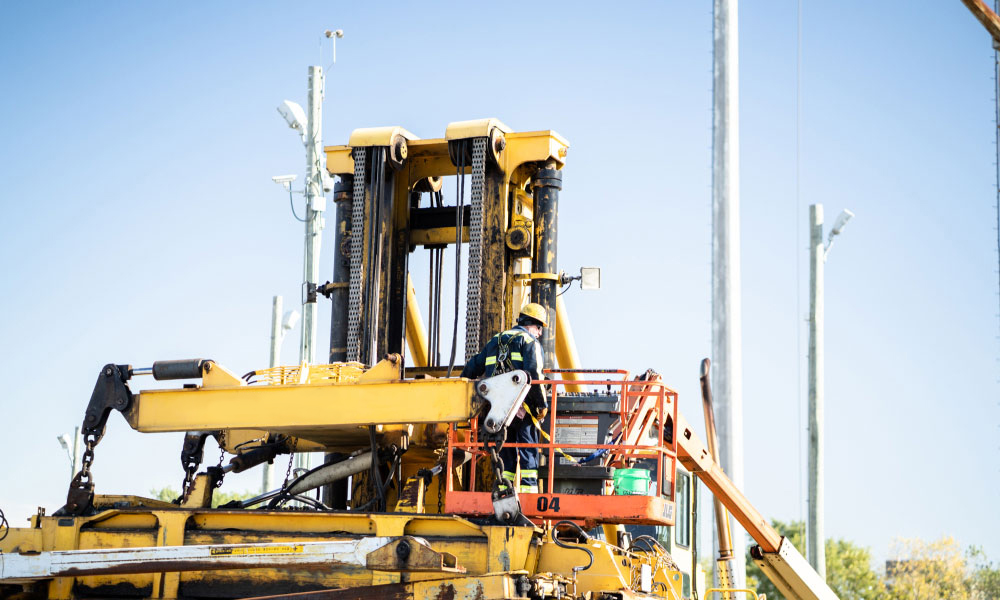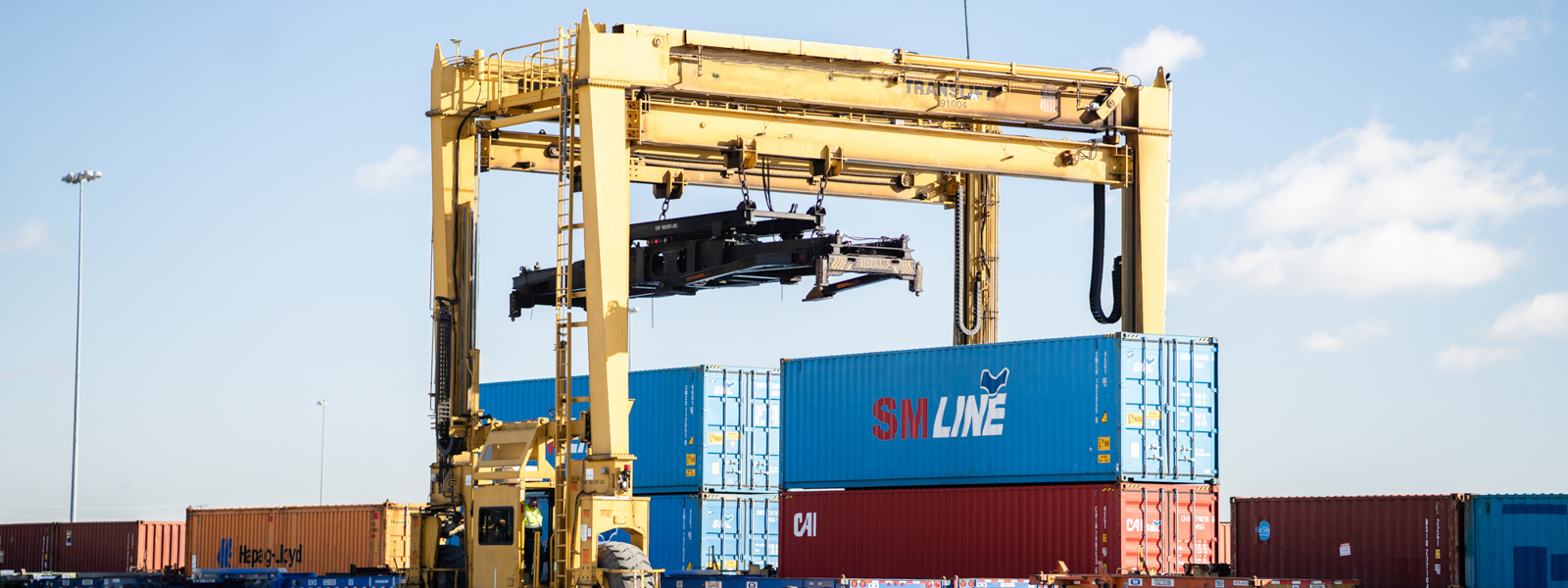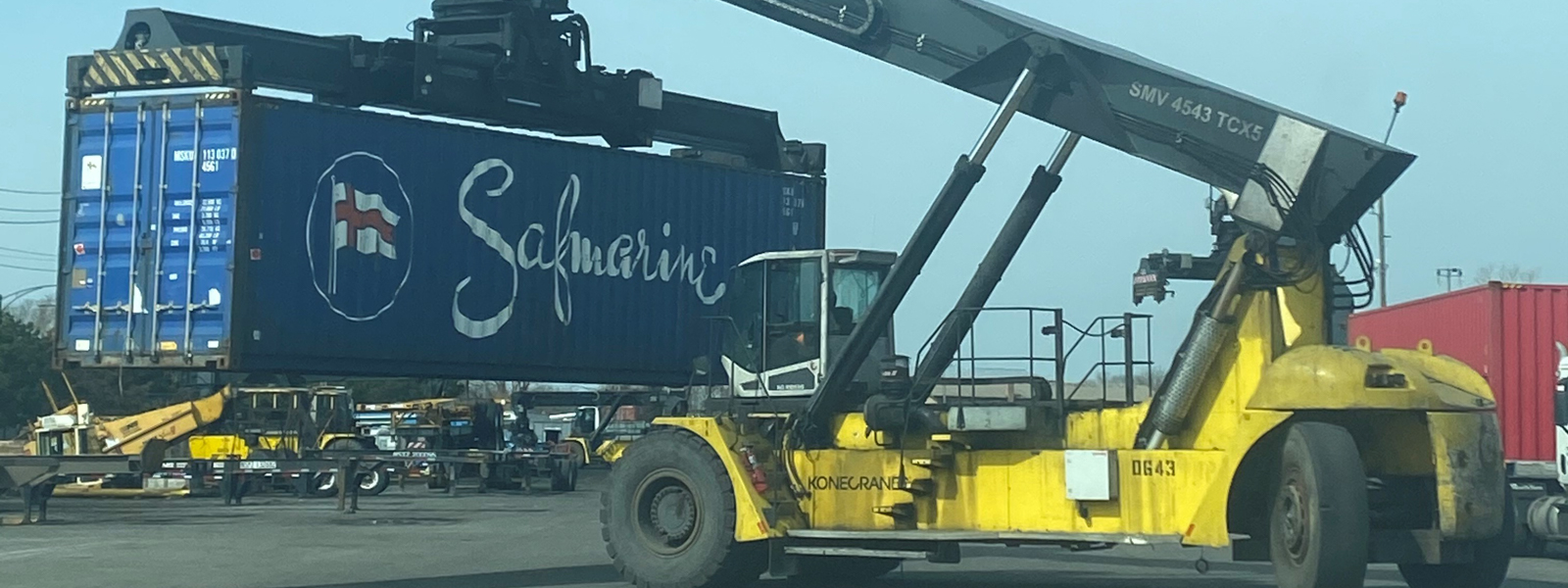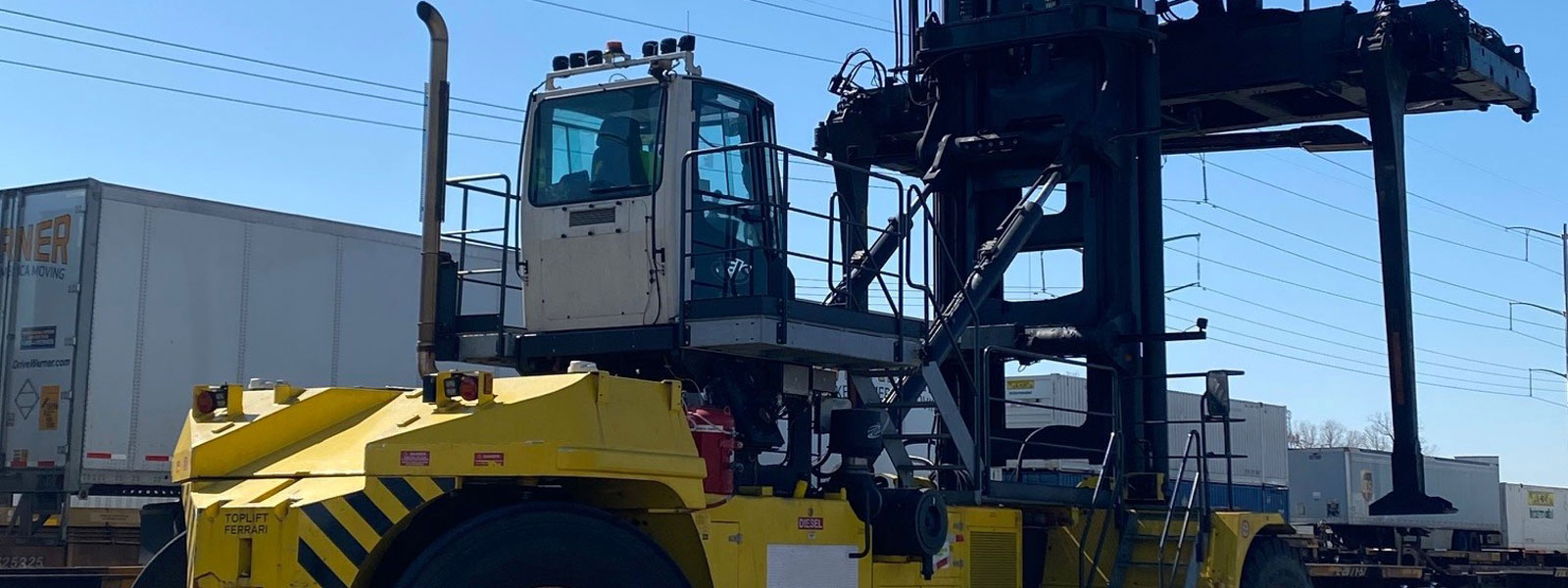
Focused on ensuring equipment uptime, we implement a detailed preventative maintenance program to keep equipment running at peak condition so freight gets to where it needs to safely and on time. Examples of machines we maintain in the railyards are:
Transport via rail is the most efficient and vital component to maintaining the availability of everyday goods that this nation depends on. Reliability of intermodal heavy equipment is crucial to that efficiency.
Take a look at some of the machines that keep railroads rolling:
Check out some of the machines behind America’s critical recycling process:

Rubber Tired Gantry (RTG) Cranes are mobile cranes that travel over the rail or stacking area of containers in a railyard. They’re essential to loading and unloading rail cars and trailers to move freight around the country. Rubber tired gantry cranes can span the width of multiple tracks and have the ability to maneuver over other stacked containers.

Reach Stackers are built for the Intermodal Industry to handle shipping containers. They’re designed to lift these large containers to and from rail cars or trailers and can pick and carry them around a terminal. These machines have gained popularity because of their ability to perform multiple tasks in the container handling process.

Side Loaders are similar to a straight-masted lift truck. They lift containers using a special spreader and can carry and stack multiple containers high. Unlike a reach stacker, they’re unable to handle containers beyond the first row.
Steel Mill Application (SMA) Front-End Loaders have the base of a tried and tested design with a reinforced frame, cab, and components in order to operate and handle molten steel and blast furnace slag. Designed to protect the operator and reduce the risks when handling molten slag, the front-end loader cab is fitted with impact- and heat-resistant glass. There is also a closed HVAC system to prevent the introduction of gases created when handling the molten slag.
The Straddle Carrier increases productivity for the customer by eliminating the use of flatcars to transport slabs throughout the mill. This asset decreases the number of times the slabs are handled by providing the ability to drive directly over top of the slabs, picking them up, and transporting them directly to the location of the customer’s needs. These machines can also pick and sort through slab piles, selecting specific slabs for their orders, and achieving just in time delivery.
The Pot Carrier is constructed to lift and carry a slag pot designed to the specific capacity of the steel maker’s furnace. It also provides the operator with additional safety features in an effort to further reduce the hazards and to allow for ease of handling and transporting the slag pot to an engineered dumping station.
The prime mover, or tractor, utilizes a scraper design and then updates the operator’s cab with the ability to face in the direction of operation. This improves visibility and increases productivity.
With a modified or purpose-built spreader replacing the container spreader, we hang magnets for slab handling and C-hooks or coil tongs for coil movements. When handling hot slabs, purpose-built slab tongs can withstand temperatures up to 1,100 degrees F are attached. Typical lifting capacity under the lifting device can range from 35 to 50 tons depending on attachment weight and configuration. However, there are manufacturers that are now building Reach Stackers with significantly more lifting capacity. As capacity goes up, maneuverability due to increased wheelbase goes down.
The first Continuous Transport System Bulk supplied to a customer was in 1999. This replaced multiple heavy-duty tractors and trailers along with the labor support required to operate the trucks. Not only were we able to save our customer significant expense by moving from multiple trucks, trailers and drivers to one single machine with one operator, but we were also able to decrease the carbon footprint by burning significantly less fuel while accomplishing the same or more productivity.